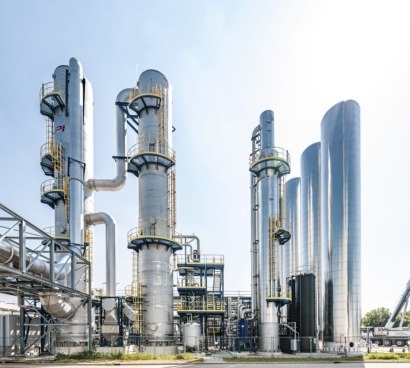
NZIA will accelerate the deployment of technology aimed at decarbonizing the European industry. In addition, the new legislation harmonizes permitting processes and public procurement with the goal of establishing a regulatory framework, encouraging private investment and streamlining the deployment of technologies such as:
Carbon Capture, Utilization and Storage (CCUS) – Waste-to-Energy plants can reduce waste and achieve net negative carbon emissions due to waste's 50-60% biogenic fraction. After pulp and paper plants, Waste-to-Energy has the highest potential for Bioenergy Carbon Capture and Storage in Europe with 36 million tons of CO₂ per year. AVR Duiven has had a CO₂ facility in operation since 2019, with a capture capacity of 100,000 tons CO₂ per year, which can be routed to local horticulture to support the sustainable cultivation of fruit and vegetables. The NZIA sets a 50 million ton CO₂ storage capacity by 2030 and requires Member States to facilitate CO₂ transport infrastructure.
Hydrogen technologies recover heat generated during the incineration process and put it to good use for district heating or other industrial processes. During this Waste-to-Hydrogen conversion, the biogenic fraction of the waste contributes to a low-carbon hydrogen whose use can help decarbonize the European energy system.
Heat Pumps – Waste heat is a form of renewable energy that can be directed into district heating or towards industrial processes. In cities with advanced district heating systems such as Brescia or Malmö, Waste-to-Energy is able to provide over 50% of the city's district heating needs. The sum of waste heat potential in the EU is 304.13 TWh/year, equivalent to almost 10% of the EU's total industrial energy consumption.
Sustainable alternative fuels technologies – The Waste-to-Energy sector can also play a role in the production of Sustainable Alternative Fuels. Using biogenic carbon that is captured from WtE plants and combining it with green hydrogen, the non-recyclable municipal solid waste finds a new pathway to becoming sustainable fuel, simultaneously contributing to decreasing landfill waste and GHG emissions.
Sustainable biogas and biomethane technologies – Municipal waste can provide a sustainable alternative to fossil fuels. The power from the Dietikon plant is combined with CO₂ from wastewater to produce biomethane, generating 18,000 MWh of natural gas substitute a year and reducing CO₂ emissions by up to 5,000 tons.
Far beyond incineration, the fact that so many of the technologies legally defined as ‘net-zero technologies’ in the NZIA are found in Waste-to-Energy plants highlights the sector’s key contribution in the net-zero transition. Marking the end of the legislative semester full of industrial and environmental advances, ESWET welcomes the EU’s ambition and embraces Waste-to-Energy’s role in creating a greener Europe.

